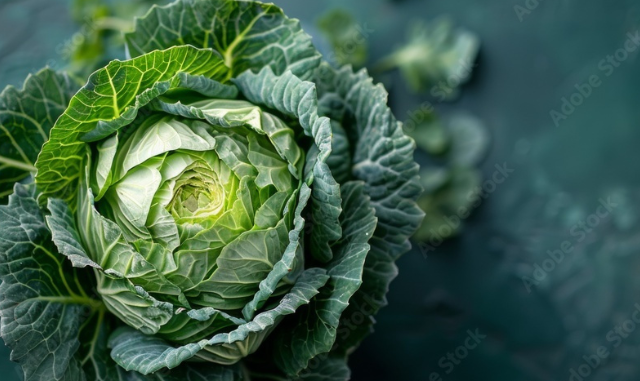
Cabbage Benefits Health
Cabbage (Brassica oleracea) is a cruciferous vegetable and fodder plant of the mustard family (Brassicaceae) of which various agricultural forms have been developed for cultivation from the wild cabbage (Brassica Oleracea. Edible Portions of all cabbage cruciferous vegetable forms also include kale, broccoli and brussels sprouts which are low in calories, high in vitamin C. Head Cabbage generally designated as simply cabbage, is known as a major table vegetable in most countries in temperate zone areas. One large head of cabbage is about 7” in diameter, 300 calories, 1.5 grams of fat, 69.64 grams of carbs, 17.97 grams of plant protein, 28.7 grams fiber, 587 mg calcium, 7.36 mg iron, 3070 mg potassium, 112 mcg vitamin A, 401.9 mg vitamin C, 0.749 grams polyunsaturated fats, 0.112 grams monounsaturated fat, 44.68 grams sugar.
Cabbage Earliana is one of the earliest Heirloom maturing varieties true to its name. The Earliana cabbage is popular among avid gardeners and is ready to harvest in just 60 days after planting. Weighing in at 2 pounds plus per cabbage plant with key attributes it grows in full sun locations, maturing spread 12 inches across, growing 9 to18 inches in height, Cabbage may be directly sown or started indoors early for fall and spring crops or purchased for transplants for fall crop harvest. Other popular cabbage varieties include Cabbage Brunswick, Cabbage Salad Delight, Cabbage Early Jersey Wakefiels, Cabbage Saku Saku, Cabbage Napa Barrel Head Hybrid, Cabbage Charleston Wakefield, Chinese Cabbage Pak Choi Ji Hybrid, All forms of cabbage have succulent leaves that are covered with waxy coating which often gives the leave surface a gray green, blue green or even purple appearance in color.
Cruciferous vegetables are nutrient rich veggies packed with vitamins and minerals that have anticancer properties. Cabbage was most likely to be domesticated somewhere in Europe in ancient history before 1000 BC. The use of cabbage in cuisine has been documented since Antiquity of the ancient past, especially the period before the Middle ages. Cabbage was described as a table luxury in the Roman Empire. By the Middle ages cabbage had become a prominent part of European cuisine originating from various countries of Europe. New variants were introduced from the Renaissance on mostly by German speaking people as Savory Cabbage was developed in the 16 century. Later in the 17th and 18 centuries cabbage was popularized as a staple food source in central northern and Eastern Europe. Starting in the early modern era, cabbage was exported to the Americas, Asia and around the world.
Cabbage can be prepared in many different ways for eating this nutritious vegetable fresh, pickled, fermented, for popular dishes including Kimchi, sauerkraut, roasted, steamed, stewed, sauteed, braised or consumed in raw form. Raw cabbage is a rich source of dietary fiber, vitamin K and vitamin C. “ Red cabbage contains substances called anthocyanins which are responsible for the red, orange, blue, violet colors found in many fruits and vegetables. Population studies have linked a higher intake of anthocyanins and other so called phytochemicals to lower the risk of cardiovascular disease.” Harvard Health. According to Organic Facts research on consuming cabbage suggests the cruciferous vegetable has anti-inflammatory properties. Cabbages contain the compound sulforaphane that reduces inflammation in the body. Study indicates women who ate 3 to 4 servings of cabbage per week reduced breast cancer risk by 50 to 70 present.
Serve cabbage steamed, raw or in coleslaw to benefit from phytochemicals are only released when the cabbage is chewed or vigorously cut. Important compounds in cabbage indole-3carbinol or I3C ie especially effective against breast cancer as cabbage is considered a superfood that protects the body from disease. The compounds act as an anti-estrogen which means they actually sweep harmful estrogen from the body reducing the cancer risks. Consuming any kind of cabbage through dietary mean has been proven to lower the risks of colon cancer, breast cancer, prostate cancer due to its compounds sulforaphane, phytonutrients, beta-sitosterol, pheophytin-a, nonacosane are a very powerful superfood. Aim to eat more cabbage, broccoli, Bok choy, kale for benefits. Eat a verity of cabbages for nutritional benefits and fiber in your diet. Cabbage contains high amounts of phytochemicals that reduce free radical damage and ward off disease, and it may reduce cholesterol levels as much as a serving of oat bran.
Cheers!
Patricia Lynn
Images Courtesy of Alexandr at AdobeStock